

Age: 21
Sex: female
Date: 5 Jul 1919
Place: Gartree Road, Little Stretton, Leicester
Anne Wright was found shot in a country lane near Leicester on 5 July 1919. The case was known as the Green Cycle Case.
She had been shot whilst riding her bicycle.
Her body was found on the Saturday night in the middle of the road near a girl's bicycle and it was first thought that she had fallen off of it and her injuries caused accidently.
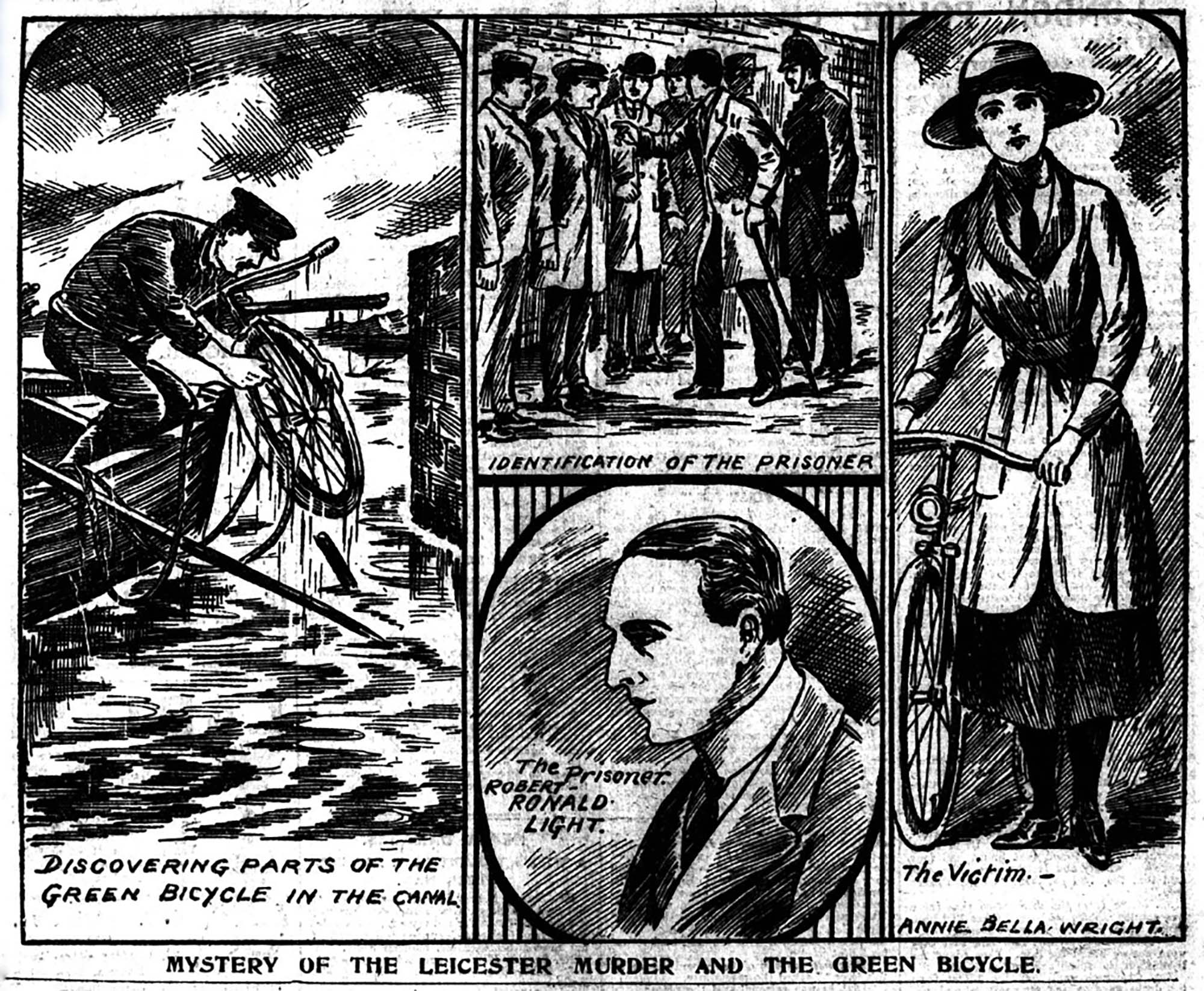
However, on 6 July 1919 a bullet was found in the road and on further examination of her body a small puncture wound was found in her face with a corresponding wound near the top of her head. The doctor said that he believed that the bullet had passed through the brain.
She had gone on a cycle ride on the Saturday afternoon to see relatives at Gaulby and had met a man who was also riding a bicycle who she had spoken to and gone with to a farm. After leaving the farm she was never seen alive again although a local farmer did say that he saw two bicyclists pass down a lane late in the evening.
It wasn't for eight months that the man that she had been see with was identified. He was found after a green bicycle frame was discovered in a canal and traced to him. The man was arrested for her murder and tried at the Leicester Assizes but was acquitted.

The bicycle frame was brought to the surface of the canal by a towing rope that had caught it. For several weeks then the police used a periscope and other appliances from a small boat on the canal with the result that other parts of the machine were found along with an Army revolver and some cartridges.
The man was a demobilised army officer and a mathematical master at a Cheltenham school. He admitted meeting Anne Wright on the day but said that he had left her alive at about 8.40pm and gone home. He said that he had later read an account of the murder in the newspapers and said that he was dazed by it all and didn't know what to do and so didn't give himself up.

Anne Wright was single and had lived with her parents who were labouring people in Stoughton. She was a well built girl of attractive appearance. She used to go to and from work on her bicycle and had been keeping company with a man who was a stoker in the Navy who was expected to be demobilised later in August 1919.
The day before her murder she had gone on her bicycle to work on the night shift and when she had returned home she had gone to bed. The next day she got up in the afternoon and at about 4pm she went to the post office returning at about 4.30pm and was last seen by her mother a little before that. Her mother said that when she last saw Anne Wright she was in good health and spirits.
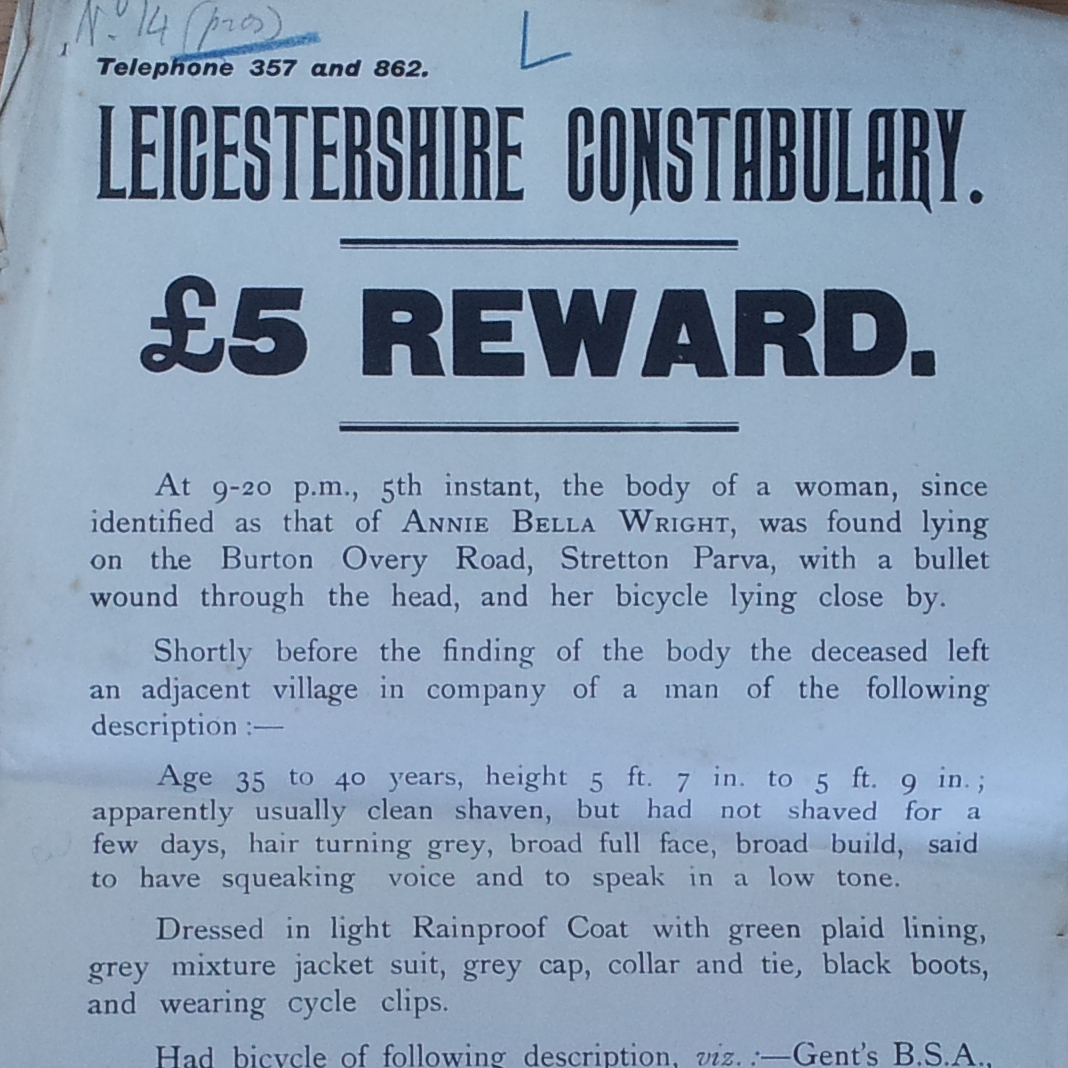
Anne Wright was found dead a few hours later on a road that was set between two gateways. From the location where she had been found it would have been required to go through one of the gateways depending on which direction you went. It wasn't however her shortest way home.
Her body was found by a farmer. She had been lying on her back and partly on her left side and close to her was her bicycle. Blood was coming from her nose and her head lay in a pool of blood. There was no sign of a struggle and to all appearances it looked as if death was due to natural causes.
However, a policeman who was not satisfied went back to the scene the next morning and after a long search found a bullet in the ground about 6 yards from where her body had lain. He said that it had apparently been trodden into the ground by a horse's hoof.
A doctor then examined the body of Anne Wright and found a bullet wound behind the left ear and another one just over the right cheek. The Attorney-General said 'Bullets make very slight punctures, and it is very easy for them to escape notice, and one wonders what might have happened if it had not been for the vigilance of the policeman.'
There was no blackening as from gun powder on her wound, indicating that the shot had been fired from at least a few feet away. Nor were there any other marks on her body and no sign of anything in the nature of an attempt at outrage.
It was then concluded that Anne Wright had been murdered.
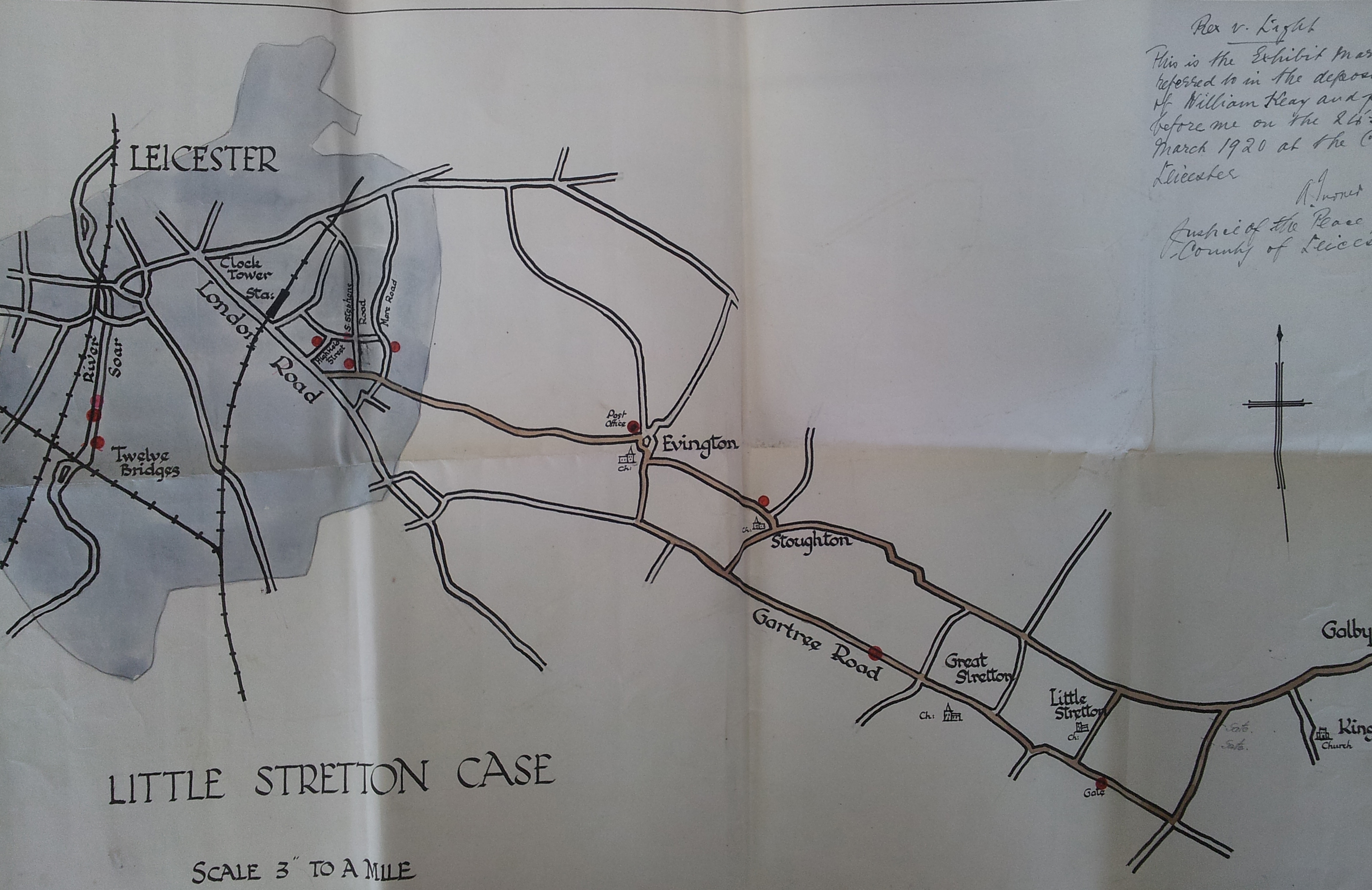
It was heard in court that earlier on the Saturday, 5 July 1919 two little girls had been riding their bicycles on a road leading from Leicester and had met a man riding in the opposite direction. They said that as he passed he smiled and spoke to them and then turned around and followed them and then overtook them. However, the girls said that they became alarmed and turned around and rode back towards Leicester leaving the man standing by his bicycle near a farm gate. The girls identified the man and said that he had been carrying a raincoat and had been riding an enamelled green bicycle.
The road that the two girls had been on was connected to the road that Anne Wright had taken.
Anne Wright had arrived at her uncle's house at 7.30pm in Gaulby. She had gone into the house and stayed for about an hour. She had arrived in the village with a man on a green bicycle and that man had then waited outside the uncle's house. The man was seen by the uncle as well as Anne Wright's two cousins who were also visiting the house. When Anne Wright was ready to go the man was seen to go up to her and say, 'Bella, I thought you had gone the other way', and they then went off together.
In court, when asked why he had waited outside Anne Wright's uncle's house he said that he had not, and said that he had been mending his bike.
He then said that he left Anne Wright at about 8.40pm and that it took him over an hour and ten minutes to get home. When asked if he had met anyone coming home through Stoughton and Evington he said he met a great many people saying that he had walked from Evington to Leicester because he had had a puncture.
When asked later if he had told his wife where he had been the man said he did not think so.

He was then asked if he had seen any police notices asking for information concerning the man with the green bicycle and he said that he had seen what was written in the newspapers but had not read any handbills. When asked if he knew that the police were anxious to find the person with the green bicycle he said he had not gone to the police because he had been absolutely dazed about the whole thing. He said that he had not thought clearly about the matter and could not make up his mind what to do.
Later in court the man was shown a newspaper from Tuesday 8 July 1919 and in response the man said that the newspaper had been the first intimation he had had of the death of Anne Wright. When he was asked why he had not gone to the police after seeing the newspaper, the man said that he didn't because apparently everyone had jumped to the conclusion that the man on the green bicycle had murdered the girl.
When the judge pointed out to the man that if he were innocent and had gone to the police and his story was found to be true, he would had put them off a false scent, that being the search for man on the green bicycle, and they might have followed other avenues and found the real killer, the man said that he saw that now. He added that he did not make up his mind deliberately to not come forward. He said that he was so astounded and freighted that he kept on hesitating and in the end he did nothing at all.
When the judge asked him if he thought that his story would not be believed the man said that he didn't think so.
When asked whether he had not gone to the police because he could not account for his movements the man said 'no', adding that he had shrunk from the publicity.
The court then heard that he had put his green bicycle in the boxroom and when asked if he was saying that he had not put the bicycle in the box room to prevent it from being seen he said 'no', and that he had put it in the boxroom so that it couldn't be seen. He added that he had kept the bicycle in the kitchen for the first ten days after the murder.
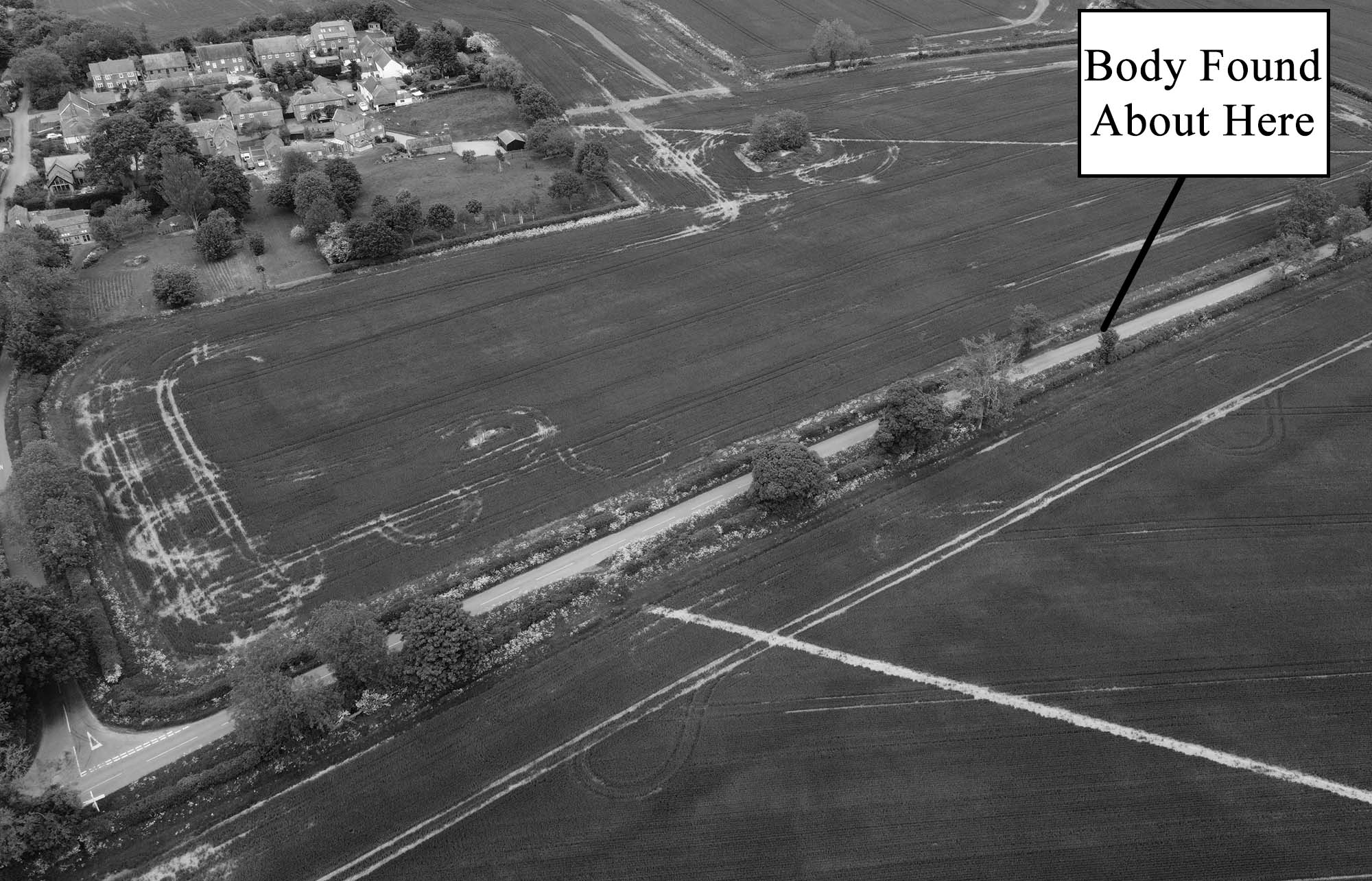
He said that he later took the bicycle to pieces and filed off the number and took it to the canal in the dark and threw it in.
When asked why he had filed off the number he said that he did not wish it traced to him.
When asked why he had told the police that he had sold his bicycle he said that he had drifted into the policy of concealment and had to go on with it for the same reason he had denied ever being in the bicycle shop.
The man also said that he had never been to the spot where Anne Wright was found dead and that he didn't hear any shot fired.
In court, the prosecution said that the idea that the shot could have been fired by accident from an adjoining field said that the nature of the wound was inconsistent with that idea and added that it was unlikely that anyone would have been firing a rifle or a revolver at that time of night.
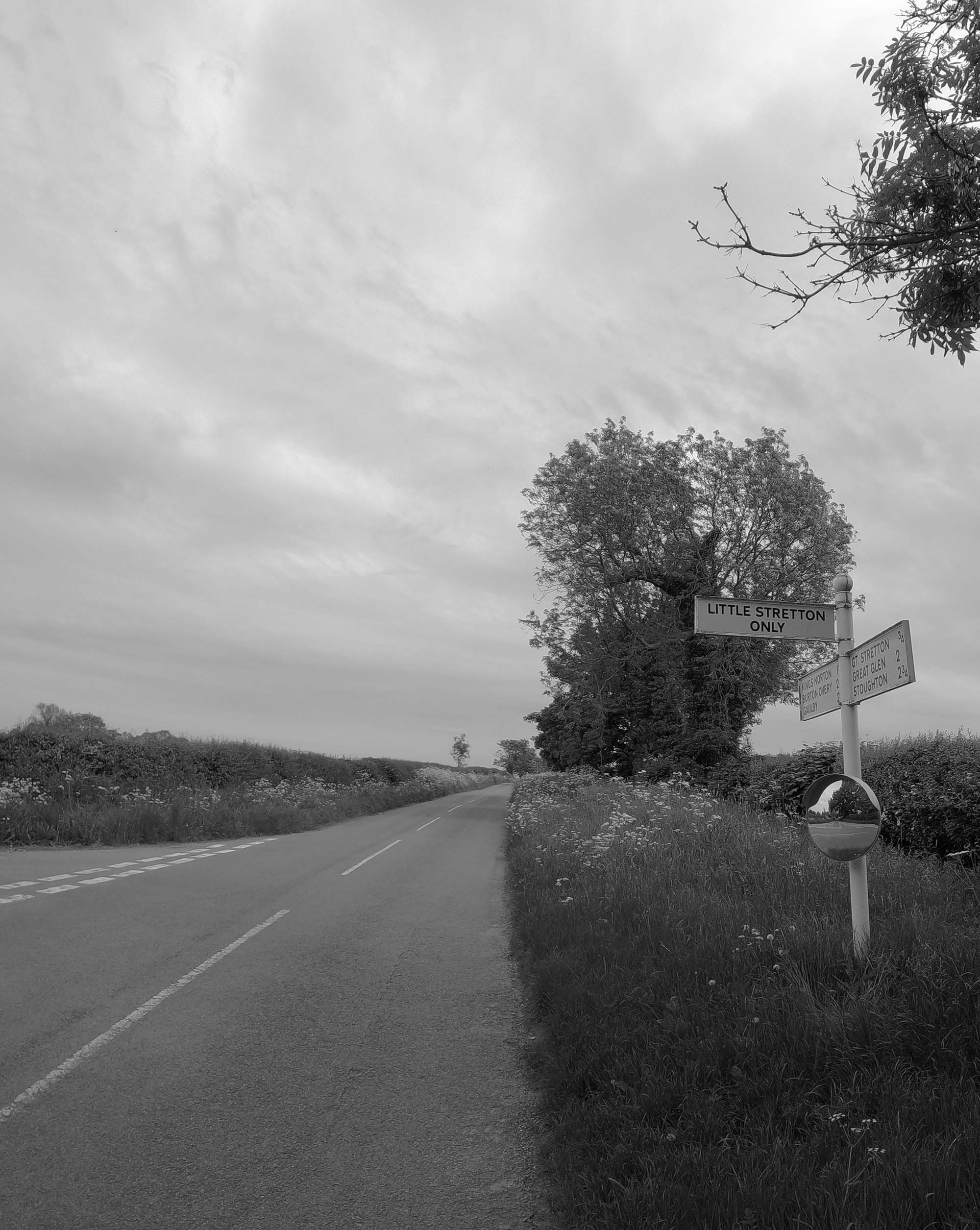
The prosecution then said that it was now no mystery as to who had owned the green bicycle and said that it was up to the jury to decide whether they believed in the man's reason for keeping his wonderful silence.
He added that it was within fifteen minutes of the man leaving Anne Wright that she was found dead by the farmer.
The prosecution also said that it was a remarkable coincidence that the bullet that had killed Anne Wright corresponded exactly with cartridges which were known to have been in the man's possession.
He added that it would be a calamity if an innocent man were punished, but it would be equally a calamity if a guilty man were to go free.

The defence noted that there was a complete absence of motive and that the man's visit to the bicycle shop indicated that he had not known Anne Wright before and could not have been in advance covering up his tracks. He also questioned why the man would take a revolver with him on a bicycle ride and added that no one could be found that had ever seen the man carrying a revolver around with him.
The defence also noted that there was no evidence that the man had made any improper overtures towards Anne Wright and that if he had been that sort of man that he would have got what he wanted and shot her afterwards.
He also added that it was not for him to prove that the man was innocent but for the prosecution to prove that he was guilty.
The jury was absent for three hours before returning with a not guilty verdict.
Anne Wright was more commonly known as Bella Wright.
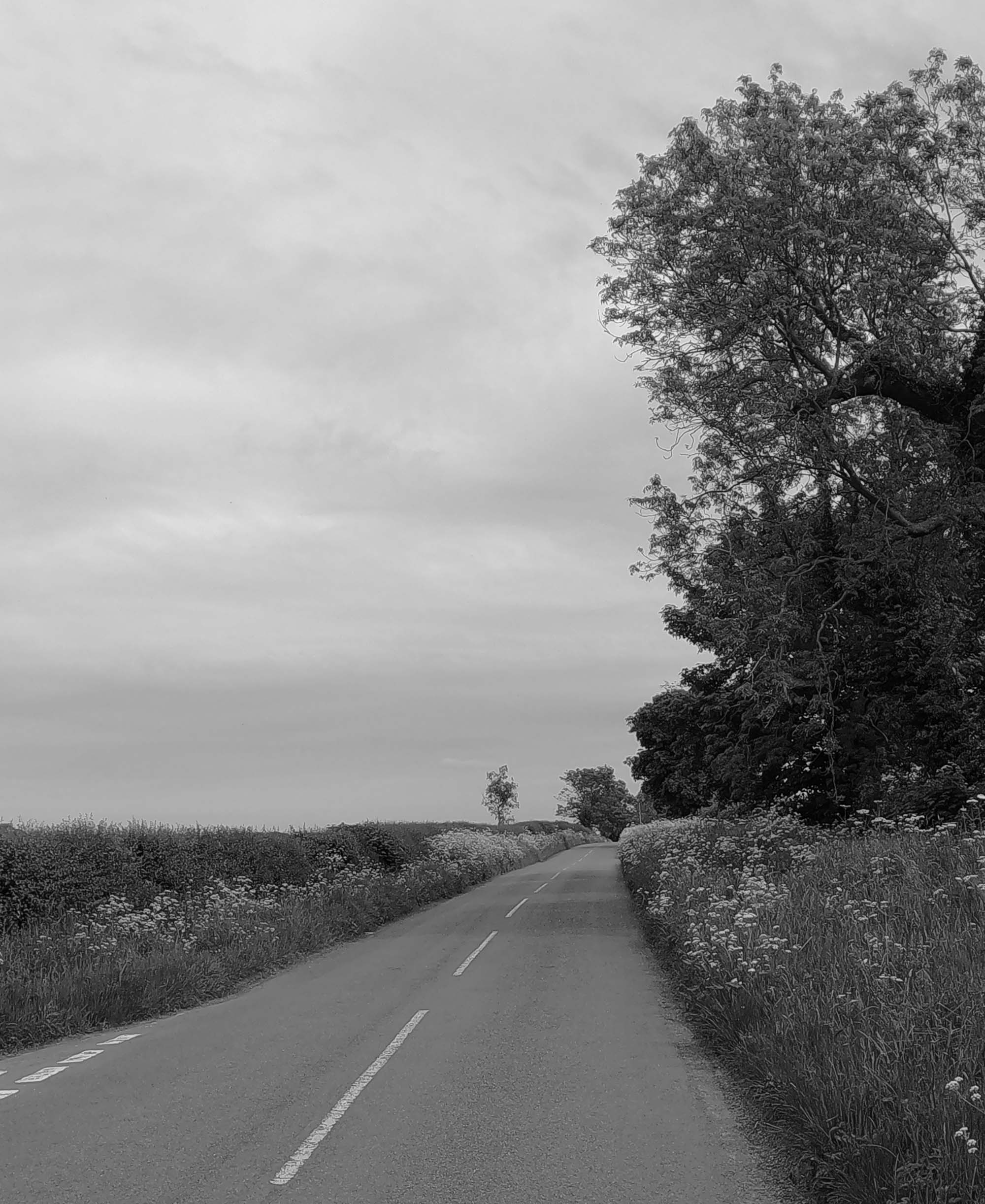
see en.wikipedia.org
see National Archives - ASSI 13/50
see Dundee Evening Telegraph - Tuesday 08 July 1919
see Yorkshire Evening Post - Monday 14 July 1919
see Gloucestershire Echo - Wednesday 09 June 1920
see Illustrated Police News - Thursday 18 March 1920
see Dundee Courier - Saturday 12 June 1920
see BBC Retracing classic murder's tracks
see Leicester Mercury Was Green Bicycle ruling a miscarriage of justice?
see BBC
see National Library of Scotland
see Unsolved 1919